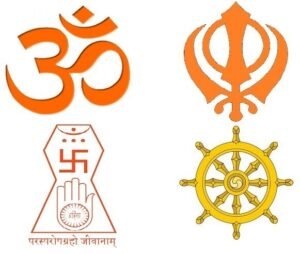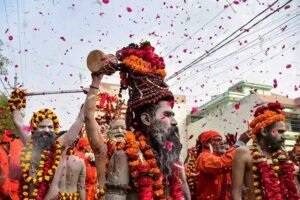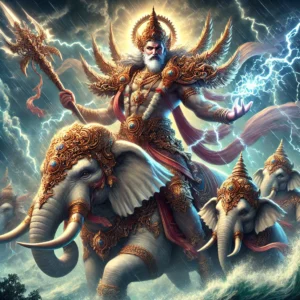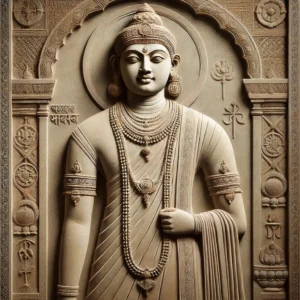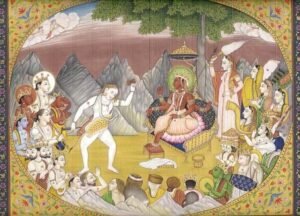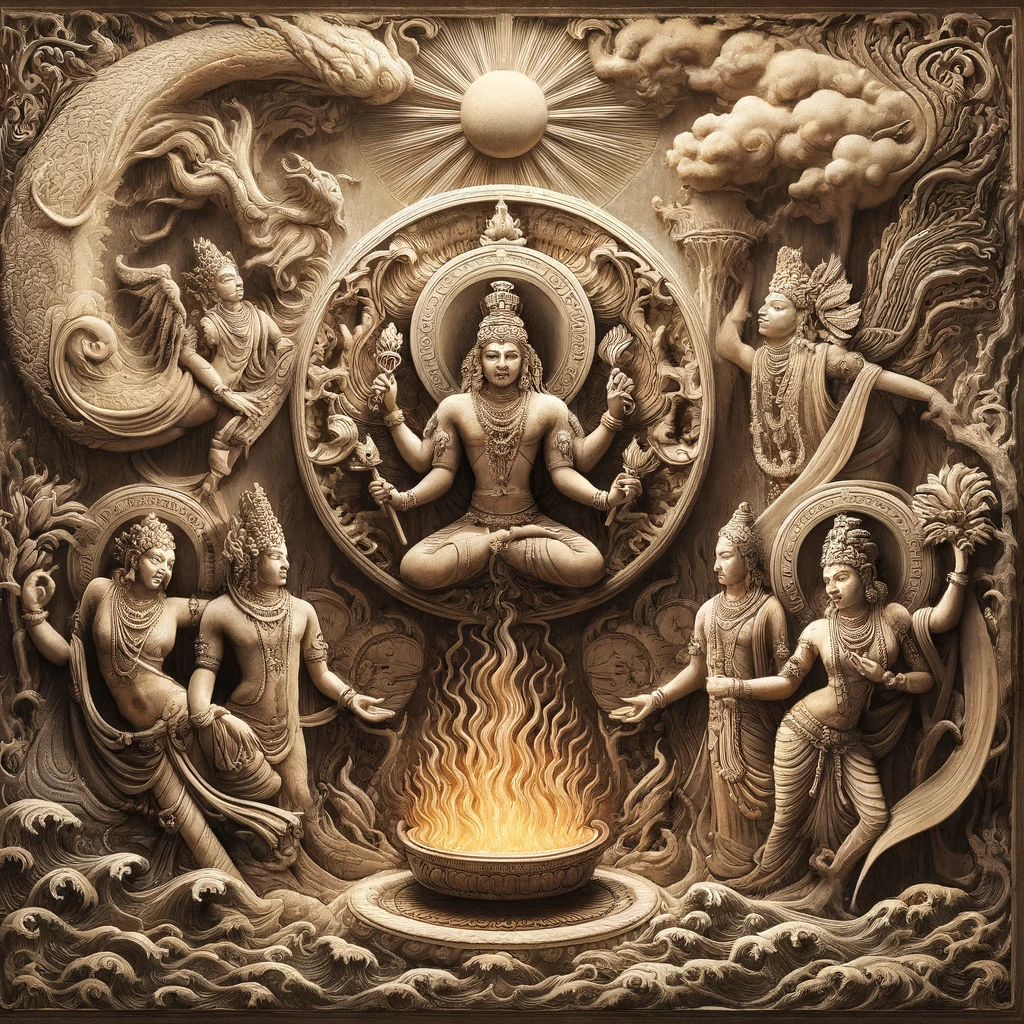
The Panchabhutas: Overview of Hindu Cosmology
- Hinduism, one of the oldest religions in the world, is deeply intertwined with nature and the elements. Hindu cosmology presents a universe that is dynamic, cyclic, and interconnected, with all elements of life being manifestations of a divine reality.
- Central to this worldview is the concept of the Panchabhutas—the five great elements:
- Earth (Prithvi)
- Water ( Apas)
- Fire (Agni)
- Air (Vayu)
- Space (Akasha).
- These elements are considered the building blocks of the universe, present in all forms of life and matter.
- Hindu deities are often personifications of these natural elements, embodying their powers, characteristics, and spiritual significance. The gods and goddesses associated with these elements are worshipped not only for their control over the natural world but also for their influence on the spiritual and moral order of the universe. This deep connection between the divine and nature underscores the importance of environmental stewardship and the reverence for life in Hindu thought.
The Panchabhutas: The Five Great Elements
The concept of Panchabhutas is fundamental in Hindu cosmology. Each of the five elements is believed to represent a different aspect of the physical world and the human body, as well as different spiritual principles. These elements are not merely physical substances but are imbued with divine energy, making them sacred in Hindu philosophy.
Prithvi (Earth)
- Prithvi is the personification of Earth in Hinduism, representing fertility, stability, and abundance. It is the solid foundation on which life is built.
- In the human body, Prithvi corresponds to the bones, flesh, and organs.
- Spiritually, it symbolizes the principle of support and the nurturing aspect of the divine. She is worshipped in agricultural rituals, Bhoomi Puja, and during festivals that celebrate the harvest.
- Prithvi’s nurturing qualities make her an essential deity for ensuring the prosperity and well-being of the community.
Apas (Water)
- Water is fluid, adaptable, and essential for life. It purifies and sustains all living beings. In the human body, it corresponds to bodily fluids such as blood, saliva, and sweat.
- Water symbolizes the emotional and cleansing aspects of life, representing compassion, love, and the flow of life.
- Varuna is the god associated with water bodies, oceans, and the cosmic order. He is revered as the guardian of the moral law (Rta) and is invoked for protection, prosperity, and purification.
- Varuna’s connection with water makes him an essential deity in rituals involving water, such as Jalabhisheka and Tarpana.
Agni (Fire)
- Fire is transformative, purifying, and energizing. It represents the force of change, destruction, and renewal. In the human body, Agni is linked to metabolism and digestion. Spiritually, it symbolizes knowledge, clarity, and the light of consciousness.
- Agni is the Vedic god of fire, who plays a central role in Hindu rituals. He is considered the mediator between the gods and humans, carrying offerings to the divine and purifying the environment.
- Agni is invoked in almost all Hindu rituals, from weddings to yajnas, symbolizing the importance of fire in both the physical and spiritual realms.
Vayu (Air)
- Air is dynamic, vital, and pervasive. It sustains life through the breath and connects all living beings. In the human body, it corresponds to the breath and the movement of energy (Prana). Air symbolizes communication, intelligence, and the life force that animates the cosmos.
- Vayu, the god of wind, is revered for his power over the air and breath. He is considered the life force (Prana) that sustains all living beings.
- Vayu is invoked in rituals related to health, vitality, and spiritual growth, emphasizing the importance of breath control and the flow of energy in the body.
Akasha (Space)
Space is the vast, all-encompassing void in which all elements exist. It represents the infinite, the ether, and the potential for creation. In the human body, Akasha is associated with the spaces within, such as the cavities and the mind. Spiritually, it symbolizes the concept of freedom, expansion, and the divine consciousness that pervades all.
Understanding the association between Hindu deities and the elements provides insight into the religion’s profound respect for nature. This connection between the divine and the natural world is not only symbolic but also a reminder of the responsibilities humans have towards maintaining the balance of the environment. The worship of these deities and the elements they represent continues to be a central part of Hindu spirituality, emphasizing the importance of living in harmony with nature.


